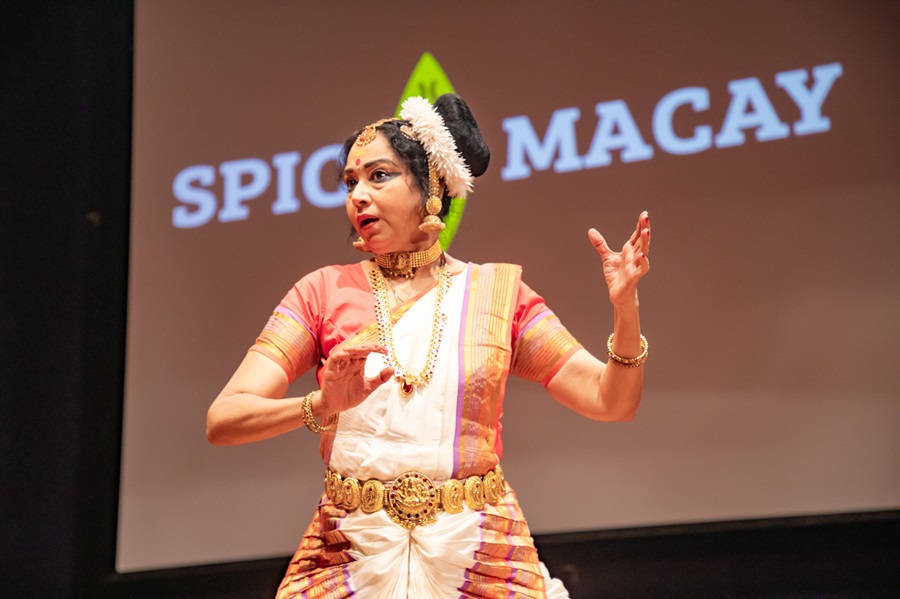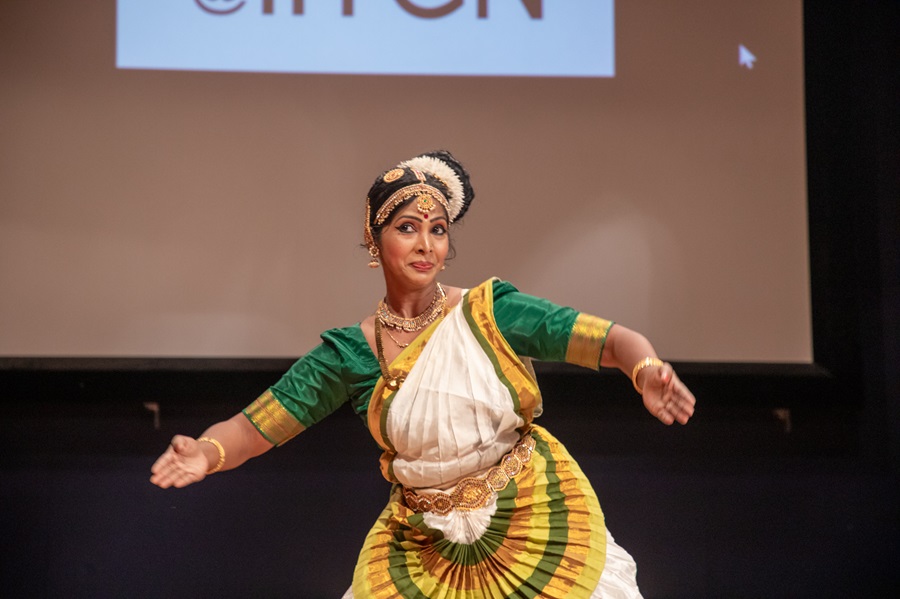STORY CREDITS
Writer: Vasudha Chatterjee
Photo: Diptanka Sekhar De
In an effort to celebrate the rich cultural heritage of India, the Indian Institute of Technology Gandhinagar (IITGN), in collaboration with SPIC MACAY (Society for the Promotion of Indian Classical Music And Culture Amongst Youth), hosted an enthralling dance recital by the Mohiniyattam exponent Guru Gopika Varma on August 7, 2024. The artist was accompanied by her illustrious student Divya Godan Namboodiri, along with vocalist Kottakkal Jayan and Edakka artist Satheesh Poduval. Meticulously planned by the Art@IITGN team, the event was held at the Jasubhai Memorial Auditorium of the Institute, and received a heartening response from the IITGN community.
An important aspect of Mohiniyattam is its emphasis on abhinaya. Demonstrating the same through her performance, Smt. Varma explained its vitality in the storytelling process. She also illustrated the significance of various mudras and exercises quintessential to the dance form, while simultaneously comparing them with the relatively popular style of Bharatanatyam. As she aptly remarked: “The difference between Bharatanatyam and Mohiniyattam is like the difference between Tamil and Malayalam.”


Guru Gopika Varma’s tryst with Mohiniyattam started at the age of 10. Initially, she learnt under the guidance of Smt. Girija and Smt. Chandrika Kurup. Her expertise was further refined through training with the renowned Kalyani Kuttyamma and her daughter Smt. Sreedevi Rajan, alongside the acclaimed Sri. Kalamandalam Krishnan Nair, whose guidance profoundly influenced her mastery of abhinaya.
In a riveting presentation of Adi Shankaracharya’s shlokam, Smt. Varma brought to life the eight rasas, enchanting the audience with her abhinaya and grace. She also spoke of their origins, thereby underlining the rich artistic tapestry of the Indian subcontinent. What set her performance apart was, however, its emphasis on audience interaction. Adding a unique dimension to the event, Guru Varma engaged the audience in interactive exercises, such as the shirobheda and drishtibheda, thereby fostering a deeper connection between the artist and the audience, and emphasizing the relevance of these techniques in our day-to-day lives.

